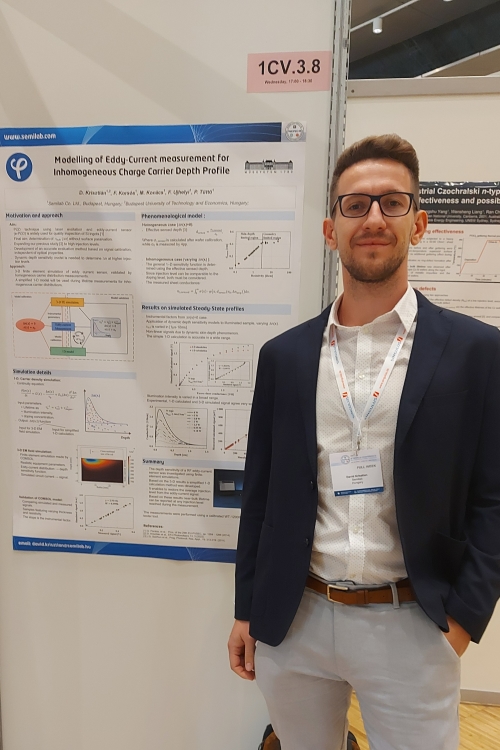Semilab publication at EU-PVSEC / WCPEC-8 is available to read online
12.21.2022

We developed a simple one-dimensional model of the eddy-current measurement for samples with inhomogeneous carrier depth profile. The model is well suited for the evaluation of transients recorded from ingots or thick slices of silicon using radio frequency (RF) eddy-current based photoconductance decay (PCD) technique [1]. The three-dimensional distribution of the RF magnetic field, the induced eddy-currents and depth sensitivity of the eddy-current sensor was thoroughly analyzed using a finite element (FE) simulation. The experimental results confirmed the reliability of the 3D FE simulations to model the eddy-current measurement. Despite the three-dimensional nature of the problem, we found that in the case of laterally homogenous carrier profile, a simplified one-dimensional model can calculate the eddy-current signal with sufficient accuracy. The few calibration parameters of the model can be easily determined using homogenous resistivity etalon samples of different thicknesses. Such rapid calculation of the expected eddy-current signal enables to apply the model even for real-time RF-PCD measurement. To verify the reliability and applicability of the applied model, we injected a controlled density of excess carriers using a large spot laser illumination at various flux levels. The basic parameters to compute the excess carrier depth profiles was determined using an iterative method. The agreement between the measured, the calculated (1-D model) and simulated (3-D) eddy-current signals confirm the reliability of our model.
The publication, presented by our colleague, Dávid Krisztián earlier this year at the WCPEC-8 Conference in Milan, is now available at the EU-PVSEC Proceedings website. If you want to know more about the results of the experiment our colleagues did by creating a one-dimensional model of the eddy-current measurement, you can read the full material at EU-PVSEC Proceedings (2022).





